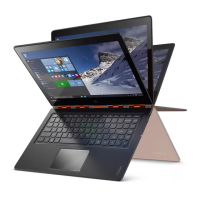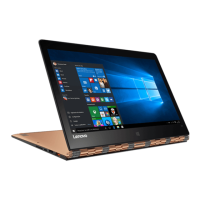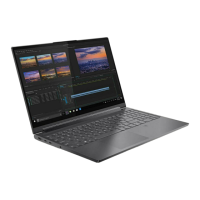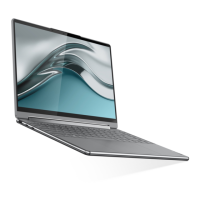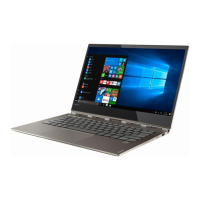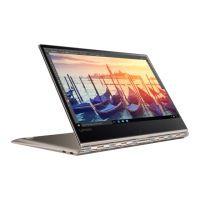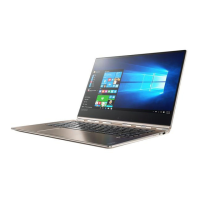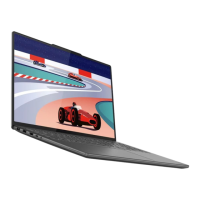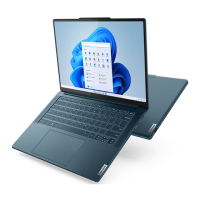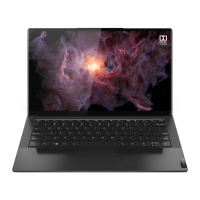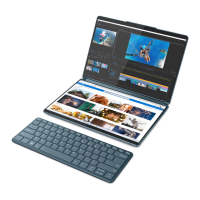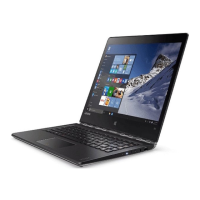
Do you have a question about the Lenovo YOGA 900-13ISK and is the answer not in the manual?
| Tcase | - °C |
|---|---|
| Bus type | OPI |
| Stepping | D1 |
| Tjunction | 100 °C |
| FSB Parity | No |
| Processor cache | 4 MB |
| Processor cores | 2 |
| Processor model | i7-6500U |
| System bus rate | 4 GT/s |
| Processor family | Intel® Core™ i7 |
| Processor series | Intel Core i7-6500 Mobile series |
| Processor socket | LGA 1356 (Socket B2) |
| Processor threads | 4 |
| Processor codename | Skylake |
| Configurable TDP-up | 25 W |
| Number of QPI links | - |
| Processor frequency | 2.5 GHz |
| Processor cache type | Smart Cache |
| Configurable TDP-down | 7.5 W |
| Processor lithography | 14 nm |
| Processor manufacturer | Intel |
| Processor front side bus | - MHz |
| PCI Express slots version | 3.0 |
| Processor boost frequency | 3.1 GHz |
| Processor operating modes | 64-bit |
| PCI Express configurations | 1x4, 4x1 |
| Thermal Design Power (TDP) | 15 W |
| Configurable TDP-up frequency | 2.6 GHz |
| Configurable TDP-down frequency | 0.8 GHz |
| Maximum number of PCI Express lanes | 12 |
| On-board graphics card ID | 1916 |
| On-board graphics card model | Intel® HD Graphics 520 |
| Graphics card Open GL support | Yes |
| On-board graphics card family | Intel® HD Graphics |
| Maximum on-board graphics card memory | 1.74 GB |
| On-board graphics card OpenGL version | 4.4 |
| On-board graphics card base frequency | 300 MHz |
| On-board graphics card DirectX version | 12.0 |
| On-board graphics card dynamic frequency (max) | 1050 MHz |
| Processor code | SR2EZ |
| Processor ARK ID | 88194 |
| Processor package size | 42 X 24 mm |
| CPU configuration (max) | 1 |
| Supported instruction sets | SSE4.1, SSE4.2, AVX 2.0 |
| Intel Smart Response Technology version | 1.00 |
| Intel Stable Image Platform Program (SIPP) version | 0.00 |
| Intel segment tagging | Home Office, Small Business |
| Maximum internal memory (64-bit) | 16 GB |
| Intel® Virtualization Technology (Intel® VT) | VT-x, VT-d |
| Form factor | Convertible (Folder) |
| Product type | Hybrid (2-in-1) |
| Product color | Silver |
| Housing material | Aluminum |
| Motherboard chipset | Intel SoC |
| Internal memory | 8 GB |
| Memory clock speed | 1600 MHz |
| Memory form factor | On-board |
| Internal memory type | LPDDR3-SDRAM |
| SSD capacity | The Solid State Drive's storage capacity in Gigabytes. |
| SSD interface | M.2 |
| Storage media | SSD |
| Total storage capacity | 512 GB |
| Compatible memory cards | MMC, SD, SDHC, SDXC |
| Display diagonal | 13.3 \ |
| Touch technology | Multi-touch |
| Touchscreen type | Capacitive |
| Display brightness | 300 cd/m² |
| Display resolution | 3200 x 1800 pixels |
| Native aspect ratio | 16:9 |
| Contrast ratio (typical) | 400:1 |
| Audio system | HD |
| Speaker power | 2 W |
| Speakers manufacturer | JBL |
| Front camera resolution | 1280 x 720 pixels |
| Front camera resolution (numeric) | 1 MP |
| Wi-Fi standards | Wi-Fi 5 (802.11ac), 802.11b, 802.11g, Wi-Fi 4 (802.11n) |
| Bluetooth version | 4.1 |
| Charging port type | DC-in jack |
| USB 2.0 ports quantity | USB 2.0 ports have a data transmission speed of 480 Mbps, and are backwards compatible with USB 1.1 ports. You can connect all kinds of peripheral devices to them. |
| Thunderbolt ports quantity | 0 |
| Pointing device | Touchpad |
| Battery capacity | 66 Wh |
| Battery life (max) | 9 h |
| AC adapter power | 65 W |
| Password protection type | HDD, Power on, Supervisor |
| Sustainability certificates | RoHS |
| Depth | 255 mm |
|---|---|
| Width | 324 mm |
| Height | 14.9 mm |
| Weight | 1290 g |
General notes about using the guide, software, and features of the computer.
Information regarding the support website for regulatory details and compliance.
An overview of the computer's top side, identifying key components and layout.
Details on keyboard layout and function key combinations for various operations.
Explanation of system shortcut keys for quick access to common settings and functions.
Information on how to position the display for different usage modes.
Describes the notebook mode for keyboard and mouse tasks.
Details the stand mode for viewing photos or playing videos.
Explains tablet mode for touch-screen interaction.
Covers tent mode for presentations with limited touch interaction.
Identifies and explains ports and connectors on the left side of the computer.
Guide on how to connect and use USB devices with the computer.
Instructions on inserting and removing supported memory cards.
Details components and indicators on the right side of the computer.
How to rotate the display panel for preferred orientation.
Identifies components located on the bottom of the computer.
Procedures for initial setup of the operating system.
Overview of the Windows 10 start menu and desktop elements.
How to access and use the Windows Settings application.
Steps to customize the start menu with favorite applications.
Instructions on how to put the computer into sleep mode or shut it down.
Procedures for properly shutting down the computer.
How to manage tasks and virtual desktops in Windows 10.
Steps to enable and connect to wireless networks.
How to use the Get Started app to learn about Windows 10 features.
Guide on using the touch screen and multi-touch gestures.
Details on gestures like Zoom, Rotate, and Slide for screen interaction.
Explanation of swipe gestures for opening task view and action center.
Steps to create a system image backup for recovery.
Process to restore the system to its original status or a backup point.
Answers to common questions regarding computer usage and specifications.
Where to locate safety, hardware, and warranty information.
Information on obtaining drivers and preinstalled software.
Troubleshooting the OneKey Recovery System, including backup failures.
How to start and use the BIOS setup utility for system configuration.
Information on how to contact customer support for assistance.
Solutions for common display issues like blank screens or distortion.
Troubleshooting steps for battery and sleep mode issues.
Addresses problems with the display panel, including blank or unreadable screens.
Solutions for issues related to audio output and speakers.
Troubleshooting steps for battery-related issues like unexpected shutdowns.
Solutions for general computer issues not covered elsewhere.
